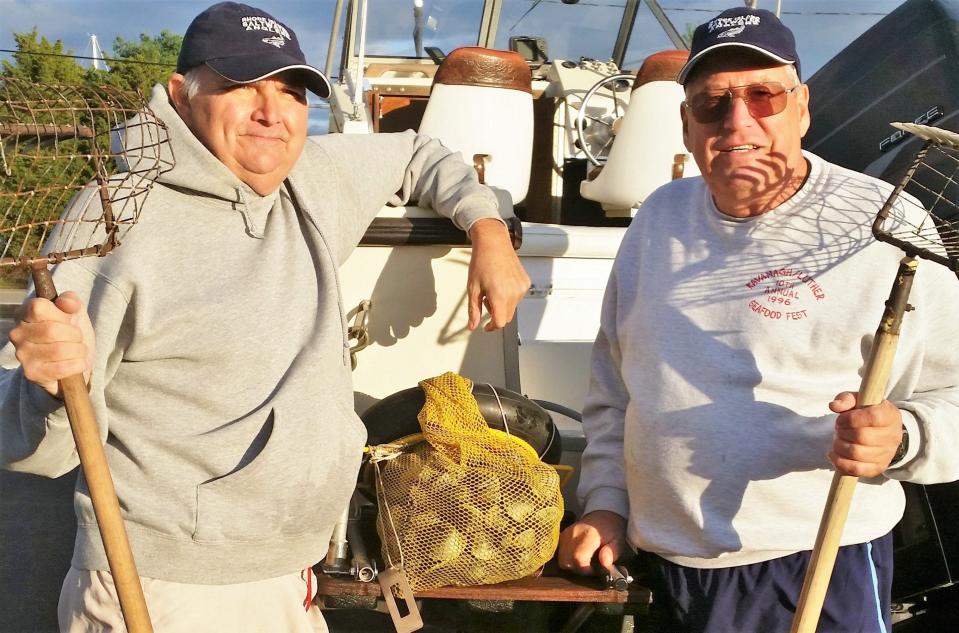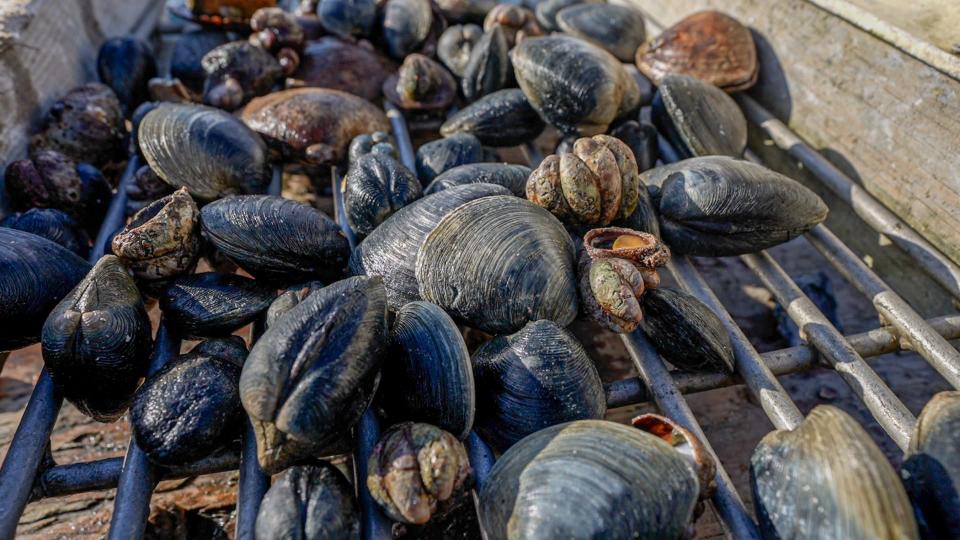How much do you know about quahogs? Here's your chance to learn all about them
How much do you know about quahogs, or quahogging?
If you would like to learn more about them, or become more proficient when you quahog, you are in luck. A Rhode Island Saltwater Anglers Association (RISAA) ‘Digging Clams’ seminar will take place Monday, June 24, at 7 p.m. at the West Warwick Elks Lodge, 60 Clyde St., West Warwick. (Food will be available through the Elks Lodge kitchen starting at 5:30 p.m.)
Expert recreational shell fishers Roger Tellier and Barry Fuler will be the guest speakers. They plan to share:
What equipment to use
How and where to use it.
They will also cover regulations and areas where shellfishing is allowed.
RISAA members are free and non-members are asked for a $10 donation to the RISAA scholarship fund. For more information, contact Scott Travers, executive director, at (401) 826-2121.
More: What comes next for RI’s disappearing quahogs? The future is uncertain
More: Want to catch more fluke? Here are some tips on fishing for summer flounder this spring

Here's some quahog history
The word quahog comes from the Narragansett Indian name “poquauhock.” Naragansetts used quahog shells to make beads that were used as money (called wampum). A quahog can get quite old, each line on its shell is a growth ring. You can count the rings to determine the quahog’s age. Researchers estimate that the largest quahogs (about four inches in length) can be 40 years old.
Where can you dig for quahogs in RI?
You can dig for quahogs in many coastal Rhode Island towns. Parts of the Bay have seasonal or permanent closures, check the RI Department of Environmental Management website at www.dem.ri.gov and/or call them for current closure information. I like to fish spots I know are clean in Warwick, North Kingstown and on salt ponds in Narragansett.
More: Fishing for striped bass? Here's how to catch them this time of year in RI waters

How to dig for quahogs
For years, I dug for quahogs with my feet, this is the way my father taught me. Sort of like doing the twist with your feet underwater and moving backward until you feel a quahog. Once you do, you reach down and pull it up with your hand. Today, I use a quahog or clam rake which is available at bait and tackle shops and many hardware stores. In early spring the water is about 50-60 degrees, so I use waders and rubber gloves with great success (I use this same gear to scallop in the fall and winter). They protect my feet and enable me to quickly catch what I need for dinner, minimizing the time I am in the cold water.
How to clean and prepare the catch
You can clean quahogs in the salt water by tossing them underwater in a mesh nylon bag. When I get home I spray them with water to get the remaining mud off and discard any with opened or cracked shells. I then soak them for an hour or so, drain and refrigerate them before opening so their muscles are cold, relaxed and easier to open.
Where’s the bite?
Freshwater. Tom Giddings of the Tackle Box, in Warwick, said, “The largemouth bass bite with spinner baits and shiners had been very good at Johnston’s Pond and Gorton Pond, Warwick.”
Striped bass and bluefish. Parker Mandes of Watch Hill Outfitters, in Westerly, said, “Stripers to 50 inches are being caught on Westerly reefs feeding on sand eels, anchovies and 4-inch squid that are prolific in the area.” Giddings said, “Some large bluefish and striped bass are being caught in the Bay with areas around Gould Island producing well. Trolling tube & worm is producing but what is really working well for customers are umbrella rigs.“ Declan O’Donnell of Breachway Bait & Tackle, in Charlestown, said, “Rain bait, small bait covering the south shore and enough of it to have some schools moving around uninterrupted. silversides, sand eels, and bay anchovies are mostly what these schools consist of. Among the stripers and bluefish shad, fluke and sea bass are targeting this bait as well.”
Tautog. The spring tautog season ended on May 31 in Rhode Island (for the spawning season) and will reopen Aug. 1. In Massachusetts, the catch limit drops to one fish/person/day from June 1 to July 31.
Summer Flounder (fluke), black sea bass and scup. “The fluke bite improved off Newport this weekend with no fluke being caught in the Bay yet. And, the scup bite is way off. I have heard ‘Where are the fluke?’, from a number of customers,” said Giddings of the Tackle Box. O’Donnell, of Breachway Bait & Tackle, said, “Fluke are starting to show up with some consistency a mix of shorts to just keeper size locally with a few 4-5 pounders with Block Island holding bigger fish and the bite seems to be in around 70 feet of water out there. Locally fish are being caught anywhere from 55-15 feet of water. Even a few keepers have been pulled out of the salt ponds. Black sea bass still seem to be in deep water off the beaches and around Block Island but some have been caught in 30 feet of water. Scup just started to arrive in coastal water. they can be a bit tight-lipped this time of year.”
“Fluke are being caught all along the southern coastal beaches from boats. A lot of shorts with some nice keepers mixed in. We even caught one from shore this week,” said Parker Mandes, of Watch Hill Outfitters.
Dave Monti holds a master captain’s license and charter fishing license. He serves on a variety of boards and commissions and has a consulting business focusing on clean oceans, habitat preservation, conservation, renewable energy, and fisheries related issues and clients. Forward fishing news and photos to dmontifish@verison.net or visit www.noflukefishing.com.
This article originally appeared on The Providence Journal: 'Digging Clams' seminar features all you need to know about quahogs

